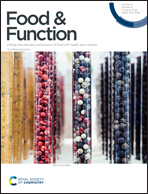Bee bread attenuates the progression of atherosclerosis by activating Nrf2/Keap1 and modulating TNF-α/NF-κβ-associated mast cell migration and a mitochondrial-dependent apoptotic pathway in the obese rat model
Abstract
This study explores the anti-atherosclerotic effects of bee bread in the context of oxidative stress, inflammation, and apoptosis phenomena in an obesity animal model, and its vitamin composition. Forty male Sprague-Dawley rats were administered with a normal diet (Normal group) and a high-fat diet (HFD) to induce obesity. After 6 weeks, obese rats that received the HFD were treated either with distilled water (Ob group), bee bread at 0.5 g per kg per day (Ob + Bb group), or orlistat at 10 mg per kg per day (Ob + Or group) concomitant with the HFD for another 6 weeks. Bee bread significantly improved atherosclerotic changes by enhancing the immunoexpressions of Nrf2/Keap1, impeding the immunoexpressions of NF-κβ downstream proteins, and intensifying Bcl-2 upregulation, attributed to the improvement in mast cell adherence and collagen deposition in the aortic wall of the Ob + Bb group. We have demonstrated that the treatment with bee bread attenuates the progression of atherosclerosis through its inhibition of vascular oxidative stress, and retardation of inflammatory reaction and apoptosis in obese rats, indicating its potential therapeutic targets for obesity-related vascular diseases. This could be partly attributed to the components of vitamins such as vitamins A, C and E that are present in bee bread, which need further study for the exact molecular mechanism of action.



 Please wait while we load your content...
Please wait while we load your content...